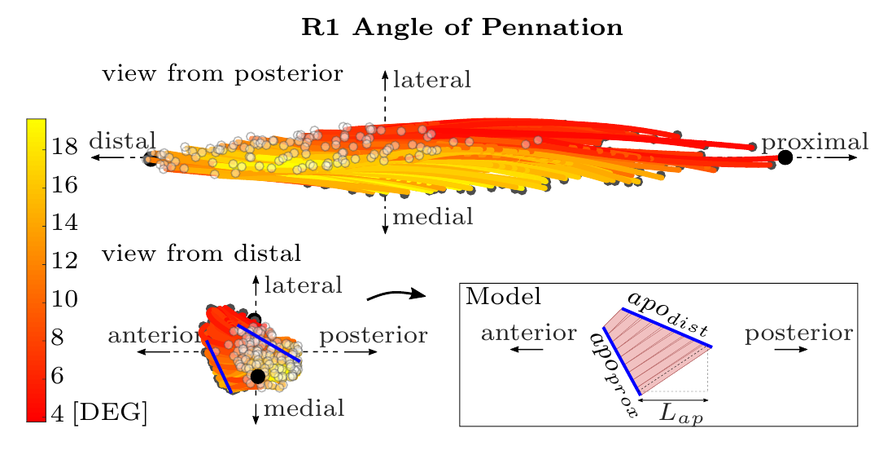Muscle architecture has a significant influence on the mechanical properties of skeletal muscles. Important parameters include the fascicle length, the angle of pennation, the physiological cross-sectional area (PCSA) as well as aponeurosis and tendon dimensions. During growth, skeletal muscles have to react to an increasing body mass and size demanding adaptations in muscle dimensions. Investigations of muscle architectural changes during growth are sparse, and existing studies often confine their scope to specific parameters or regions of the muscle. For this cross-sectional study, we determined the entire three-dimensional fascicle architecture of rabbit M. soleus via manual digitization. To this end, the investigations covered nine rabbits in the age-range between 29 days and 109 days. Fascicle length, muscle belly length, and aponeurosis length increased by 40%, 107%, and 111%, respectively. As the pennation angle remained almost constant and the contribution of fascicle length growth to muscle belly growth was minor, the increase in muscle mass primarily led to an increase in PCSA (462%), which required a similar increase in aponeurosis area (434%). Results gain new insight into the build-up of rabbit M. soleus and reveal that increases in muscle belly length are primarily connected to increases in aponeurosis length (83%). Contributions from fascicle length increase (17%) only play a minor role.
S. Papenkort, M. Böl, T. Siebert
Three-dimensional muscle architecture of rabbit M. soleus during growth
Journal of Biomechanics, 112, 110054, (2020) [Link]

